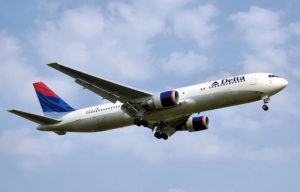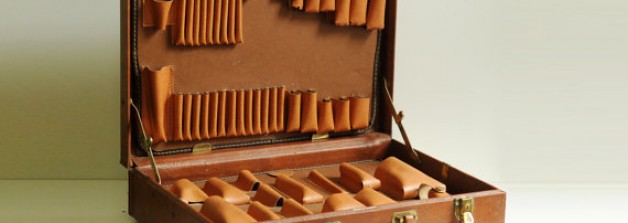Traveling with painting equipment is always a challenge …
… and Lori McNee has been there and back! She not only offers some great travel advice on taking your supplies abroad but also happily gave us permission to re-post this article from her Fine Art Tips blog. Thanks Lori!
 We have been planning this trip for 6 months and it is finally here. I am excited to go, but now I have to PACK!
We have been planning this trip for 6 months and it is finally here. I am excited to go, but now I have to PACK!
And I am asking myself, “What should I bring?”
Since 911 flying isn’t as simple as it once was. This has made air travel challenging for artists. So nowadays I try and make it easy on myself when I fly with my paints. I usually pack my small homemade pochade box in my suitcase. But on this trip for teaching purposes, I am bringing my larger EasyLite Pochade Box. This box is convenient, light weight & holds many supplies.
Below are some packing tips:
-
Try to streamline your art supplies down to the utmost essential. Think about using a ‘limited palette’ of only 5 or 6 paint colors. Don’t forget, you can mix your own greens, oranges, etc. A limited palette assures a more harmonious painting anyway.
- ‘Oil Paint’ is a security buzz word, so it is best to refer to your oil paints as “artist colors made with vegetable oil”… I always tuck a little note into my paints that explains this. Personally, I always travel with my Cobra solvent free water soluble paints.
-
Keep your paints in a separate plastic bag in case they leak during the flight and pack them in your suitcase (don’t carry them on the plane).
-
Don’t carry on your art supplies! Save yourself the hassle and risk of having them confiscated at security. Due to the TSA regulations, we are only allowed one quart size zip-lock plastic bag of 3 oz or smaller creams & liquids. Art paints fall into this category.
-
Do not carry on or check in with your luggage any flammable solvents or thinners ( you can purchase these at your destination). These will not be allowed on the plane.
-
Pack your brushes and palette knives with your luggage – just in case TSA wants to consider them ‘a weapon’…
-
If possible, pack all your supplies in a separate suitcase. If not, pack your supplies so they are on top of your other items in your luggage. This makes it easily accessible for a security check.
-
FYI, for the same reason, you should pack your shoes on top too. I always pack my shoes in a recycled plastic grocery bag.
-
Pack your empty pochade box in your carry on or suitcase.
-
If you are running out of room in your suitcase, consider ‘carrying on’ some of your clothing or shoes instead.
-
Remember to keep your toiletries in your suitcase or they might be confiscated!
Packing Check List:
-
Pochade Box (paint box) & palette
-
Tripod
-
Paints (Titanium White, Cad Yellow, Cad Red light or Madder Lake/Alizarin Crimson, Ultramarine Blue, Viridian, – this is more than plenty, or just bring the primary colors and white.)
-
Medium (non-flammable)
-
Empty container for turps or solvents
-
Paint Brushes
-
Paint Knife
-
Paper Towels (take some off a roll and fold compactly)
-
Baby Wipes (for clean-up)
-
Acrylic Primed Canvas Pad (these are light and pack easily)
-
1 board or panel to tape the canvas sheet to while painting
-
Painter’s Tape
-
Apron or smock (Scott Christensen taught me to wear black because it does not reflect onto your canvas)
-
Hat
-
Bug Spray
-
Sunscreen
-
Camera
-
Sketch book & pen or pencil
-
Don’t wear sunglasses while plein air painting…it changes the values & colors – just squint!
-
Did I forget anything?)
That is a basic check list…you of course can customize your own. When I am on a road trip, I like to paint on Masonite panels. But, for this trip I am only using the canvas pads. I plan to paint 8×10 and 6×8 studies. When I get them home, I will glue the finished canvas sheet to a Masonite panel – and it will be ready to frame!
Also, I highly suggest using water-soluble oils for air travel. They make for easy cleaning, you don’t have to worry about solvents, plus the paintings dry quickly so it makes transporting them easy. Finally, I am bringing a flat folder to secure the finished canvases. I will put a paper towel or sheet of paper in between each dry painting. Unless you have a special carrying case for wet paintings, it might be a good idea to stop painting a day or two before your return home. Take this time to enjoy the sites and take lots of pictures instead!
I hope this information helps you with your painting travels. You will learn from trial and error and decide what works for you. I look forward to sharing my adventures in France and my plein air paintings with you. And please share your own helpful suggestions in the comment section.
Share your packing tips with us!
Bon voyage! Lori ![]()
Read Lori’s original post here>>>>
And if you are looking for some travel adventure and beautiful views to paint, check out Plein Air Morocco … a guided painting workshop in exotic Morocco April 7-18, 2014 with master plein air painter, Sam Paonessa.
 Guest blogger Lori McNee is a professional artist who specializes in still life, and landscape oil paintings. She is an exhibiting member of Oil Painters of America, Plein Air Painters of Idaho, serves on the Plein Air Mag Board of Advisors, and is an Ambassador Artist to Royal Talens. As the owner of FineArtTips.com, Lori blogs about fine art tips, marketing, travel, and more.
Guest blogger Lori McNee is a professional artist who specializes in still life, and landscape oil paintings. She is an exhibiting member of Oil Painters of America, Plein Air Painters of Idaho, serves on the Plein Air Mag Board of Advisors, and is an Ambassador Artist to Royal Talens. As the owner of FineArtTips.com, Lori blogs about fine art tips, marketing, travel, and more.

